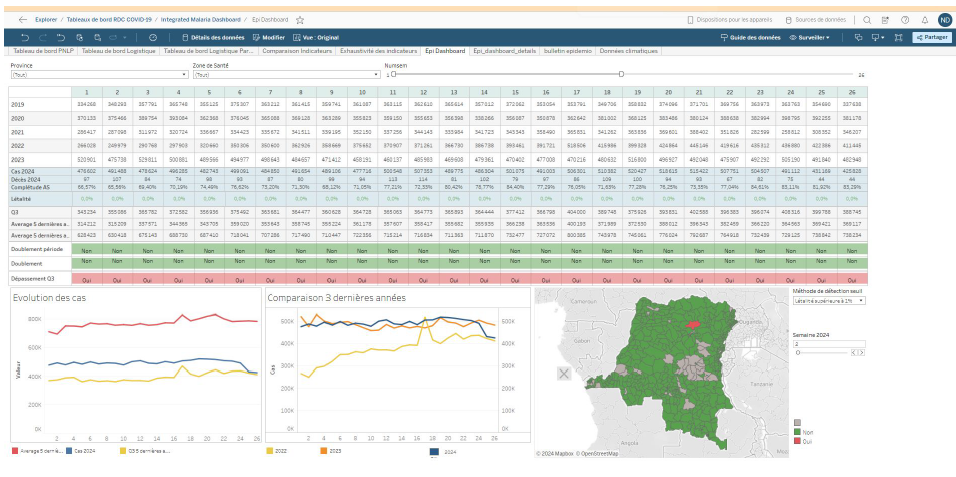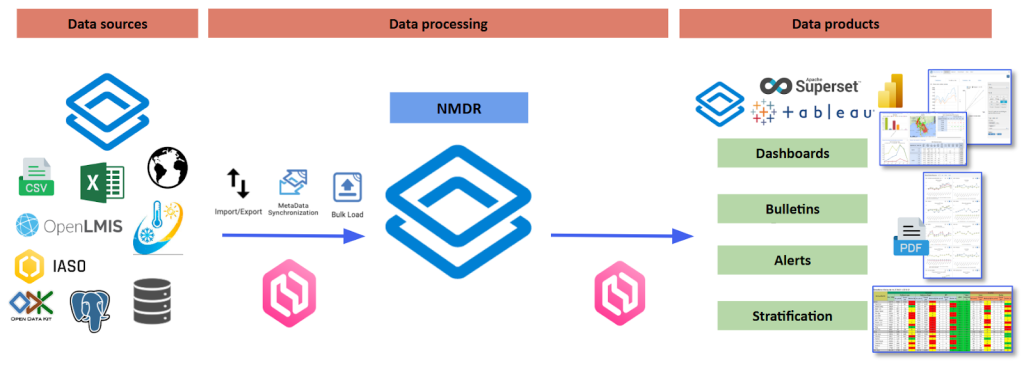
As malaria data becomes increasingly abundant and complex, and in response to the need for multifactorial interventions, the WHO recommends the establishment of malaria data repositories. Discover how Bluesquare supports this digital transformation.
Designing effective, targeted interventions in the fight against malaria requires diverse and complex data. However, such data is often scattered across various platforms and formats, making access and analysis challenging.
In the context of growing complexity in malaria control efforts, and the need for integrated responses, the World Health Organization (WHO) advocates for the development of National Malaria Data Repositories (NMDRs). These platforms are designed to consolidate all relevant malaria-related data into a centralized system.
Malaria data repositories bring together key indicators and essential information from multiple, fragmented data sources into one integrated database. This provides program managers, malaria control officers, and technical and financial partners with a single access point for malaria data at the national level.
By simplifying access and promoting data sharing, NMDRs serve as powerful decision-support tools—strategic, operational, and logistical—at every level of the health system.


Two examples of NMDR outputs: a DHIS2 dashboard from Niger, and a Tableau dashboard from DRC
A dedicated DHIS2 instance generally serves as the central platform for hosting the various datasets feeding into the repository and for providing users with comprehensive dashboards. The MetaData Sync application enables connection to other DHIS2 instances, such as the national health information system. Finally, the OpenHEXA data integration platform — open-source software developed by Bluesquare — allows the establishment of pipelines with other data sources and the execution of advanced data processing and analysis tasks.

The national health information system is a key data source for NMDRs, as malaria surveillance data is usually managed through routine DHIS2-based systems. Other data sources include eLMIS platforms, campaign systems, meteorological data, Excel files, and other formats and systems.
As a key partner of national malaria control programmes, Bluesquare offers the deployment of these NMDRs in four distinct phases, always in close collaboration with the national programme and the various partners and stakeholders, under the oversight of a steering committee. These phases help structure the support provided, assess the tool’s maturity, and ensure alignment with the objectives to be achieved:

The NMDRs are configured progressively through a modular approach, using a standardized list of typical modules. Initial assessments help guide design and implementation, establish governance mechanisms, and define technical specifications.
NMDRs are key to modernizing malaria response efforts by streamlining access to, integration of, and analysis of multisource data. These include automated surveillance bulletins, DHIS2 or Superset dashboards, malaria incidence and risk stratification maps, triangulated data on surveillance and commodity availability, predictive modeling, epidemic alert systems, reporting to WHO and the Global Fund, and more. By enabling evidence-based decision-making across all levels of the health system, NMDRs significantly enhance the effectiveness of national malaria programs.
This support for malaria surveillance is made possible through collaboration with technical and financial partners such as PATH, CHAI, the Global Fund, and the Gates Foundation.
Bluesquare has become the leading partner supporting national programmes in the implementation of NMDRs. As a result, we have gained unrivalled experience and expertise in the field. We facilitate an active community of practice that promotes cross-border sharing of lessons learnt and experiences in the implementation and use of NMDRs.
Download our summary document on NMDRs here.
For more information: